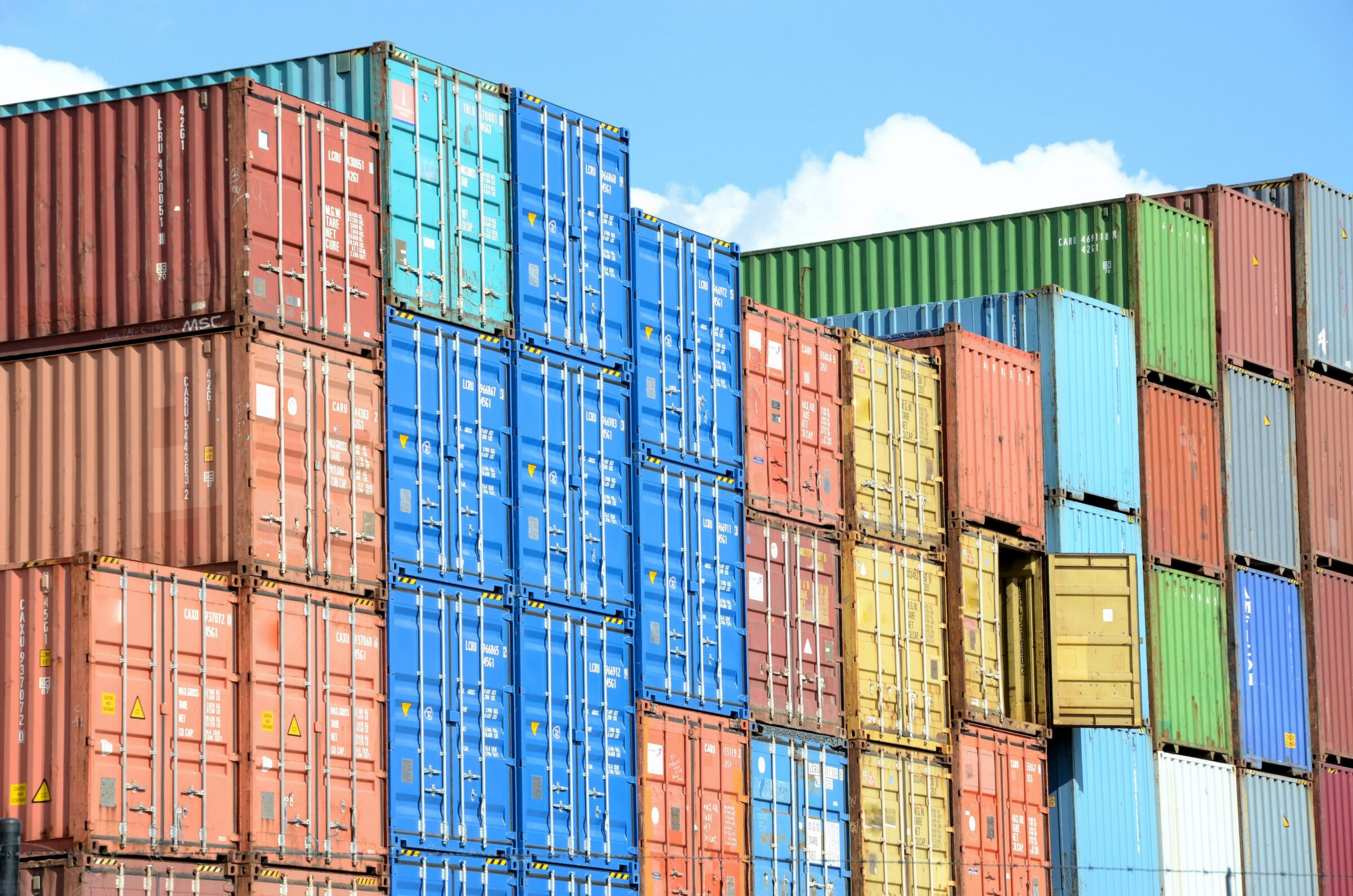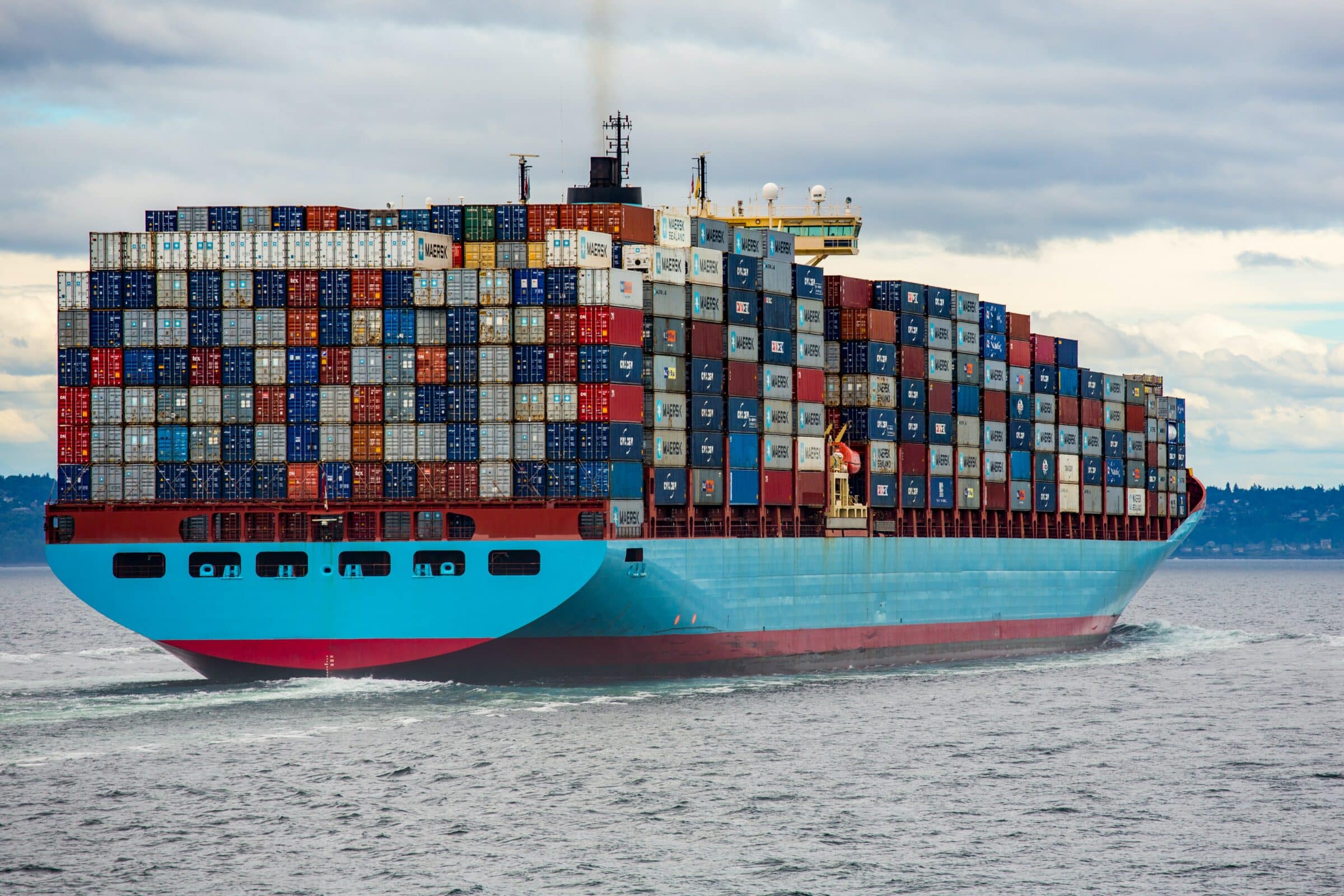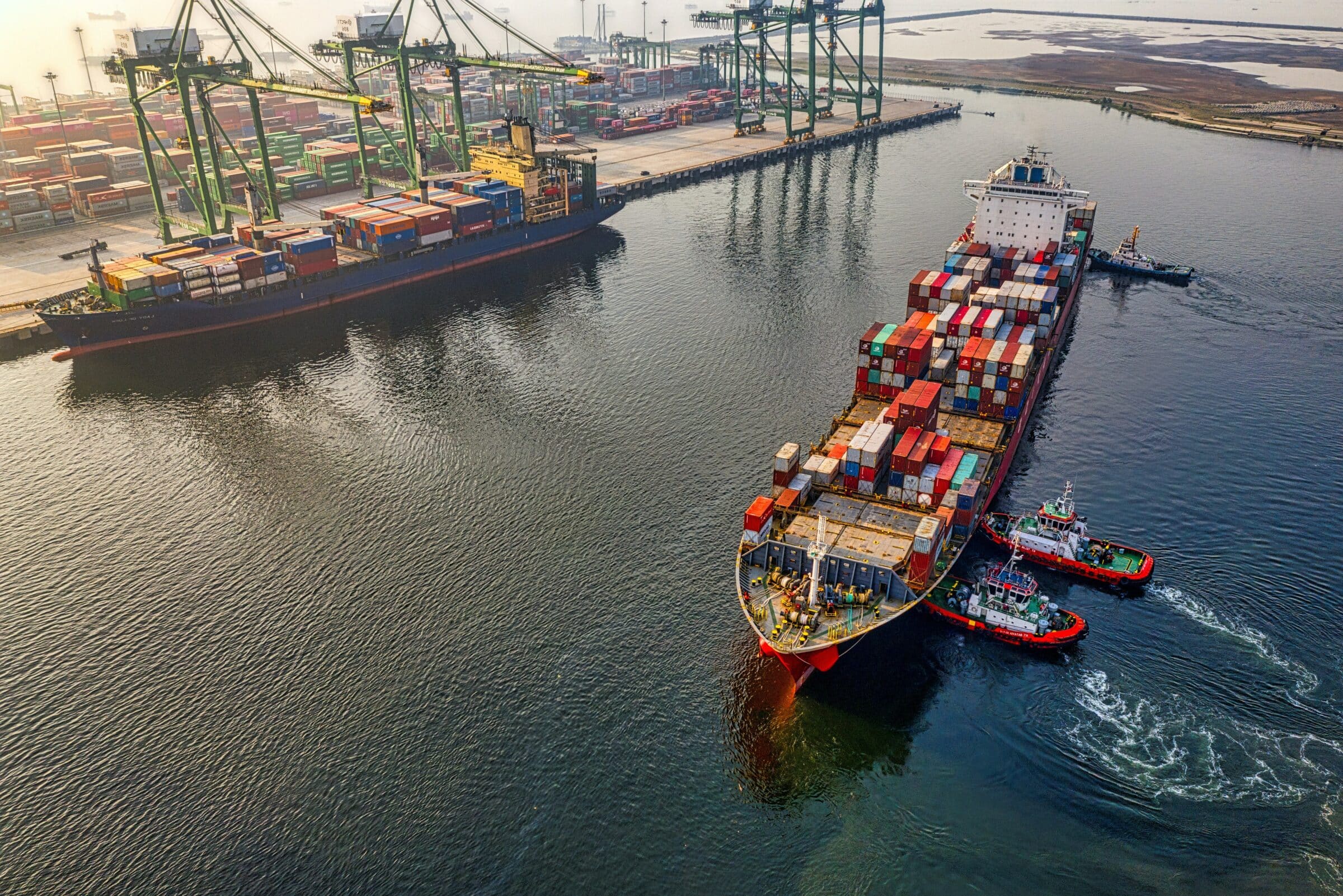Shipping container tracking traditionally relies on a combination of systems like the Automatic Identification System (AIS) used by vessels, barcodes or RFID tags on the containers, and manual data entry.
However, recent advancements within the Internet of Things (IoT) industry have made it possible for organisations to monitor and analyse their cargo in real time and are revolutionising the way shipping containers are tracked.
The integration and implementation of Internet of Things (IoT) devices on shipping vessels allows businesses to efficiently and precisely track and trace shipping containers. This data can then be accessed through an app or via the web by authorised parties like shippers, logistics providers, and port authorities.
In this blog post, we will explore the different ways how to track shipping containers and the integral role IoT plays in this process.
How does shipping container tracking work?
The two key ways shipping containers are tracked are through Automatic Identification Systems (AIS) and Container Tracking Devices (CTDs).
Automatic Identification System (AIS)
The Automatic Identification System (AIS) is an integral part of traditional shipping container tracking. It’s a tracking system used on ships and by vessel traffic services (VTS) for identifying and locating vessels by electronically exchanging data with other nearby ships and VTS stations.
In fact, the development of this technology has advanced shipping container tracking so much that the International Maritime Organization (IMO) requires AIS to be used on:
- All vessels >500GT
- All vessel >300GT that is on an “international voyage”
- All passenger vessels.
AIS works by transmitting radio waves at certain wavelengths (161.975 MHz and 162.025 MHz), which cannot be heard and listened to but can be picked up and transmitted to a ship’s computer.
AIS-equipped vessels use these wavelengths to transmit information in real-time, such as their position, speed, and navigational status at regular intervals via a VHF transmitter built into the transponder.
This data can be received by AIS-equipped ships and VTS stations within the communication range, providing comprehensive real-time tracking information.
However, whilst AIS is effective at sea, it doesn’t provide visibility of a container’s location when it’s not aboard a ship, such as during inland transit or while at a port, which is where newer technologies like IoT come into play.
Container Tracking Devices (CTDs)
Container Tracking Devices (CTDs), as an integral part of the IoT system, have revolutionised the way we track shipping containers.
These small, powerful devices are attached to the containers and provide real-time location updates, irrespective of whether the container is at sea, in transit, or at a port.
CTDs are equipped with GPS capabilities that allow for precise location tracking, and they use cellular or satellite communication to transmit this information.
This feature is a stark contrast to traditional methods that only provide visibility when the container is aboard a ship. Furthermore, these devices often have additional sensors that can monitor temperature, humidity, and shocks, providing valuable data about the condition of the cargo.
It’s common for CTDs to be used in tandem with AIS’s tracking capabilities, providing comprehensive visibility over the container’s journey from start to finish.
It’s clear to see how CTDs enhance the transparency and efficiency of the logistics chain, ensuring that businesses always have accurate and up-to-date information about their shipments.
The role of IoT in tracking shipping containers
As mentioned in the last paragraph, IoT Container Tracking Devices play a key part in tracking the location of a container, wherever it is in the world.
These devices often use IoT SIM cards which are active when near port, on river or on-land or available LTE systems that transmit from structures such as oil or gas rigs, to transmit data that allows officials to check shipping container status, location, condition, and other critical parameters. This constant stream of data from non-steered IoT SIM cards facilitates more accurate and efficient tracking, significantly reducing the likelihood of lost containers and improving overall supply chain management.
It’s evident that IoT technology is drastically altering the landscape of shipping container tracking. By leveraging advanced devices equipped with GPS and cellular or satellite communication capabilities, IoT provides real-time, accurate location tracking of containers, whether they are in transit on sea, road, or stationed at a port.
This continuous stream of precise data not only offers unprecedented visibility into the container’s location, but also vital insights into its condition, thanks to additional sensors that monitor variables like temperature and humidity. This is a powerful weapon against misplacement, theft, and damage to goods in transit, effectively bolstering the efficiency and reliability of supply chain operations.
With IoT, businesses can rest assured that they possess the most accurate and up-to-date information about their shipments at all times.
How to track containers
Thanks to AISs and CTDs, there are several ways to track shipping containers with the most common being an online tracking system of the shipping container’s website.
This data can typically be discovered using a code, which consists of either a Container Number, Bill of Lading and/or Booking Number.
1) Container Number (CN)
Container Number (CN) plays a significant role in the tracking of shipping containers. It’s a unique identifier given to each shipping container used in international trade.
This alpha-numeric code is commonly done using container number plates and is pivotal in sea container tracking.
These typically consist of a four-letter prefix representing the container’s owner or operator, followed by a six-digit serial number and a check digit.
Once a shipping container is loaded and dispatched, the container number is logged into the shipping line’s tracking system.
With this number, customers can easily track the current location and movement of their containers through the shipping line’s website or app. This helps to keep tabs on the container’s journey, ensuring accurate and timely delivery of the goods.
2) Bill of Lading (BoL)
A Bill of Lading (BoL) is an essential document in the shipping industry, serving as a contract between the shipper and the carrier, a receipt for shipped goods, and a document of title.
The BoL contains crucial information such as the nature of the cargo, its quantity, destination, and the names of the shipper and receiver.
When it comes to tracking shipping containers, the BoL number plays a pivotal role.
Shippers can use the unique BoL number to follow the progress of their shipment through the carrier’s tracking system, providing real-time updates regarding the container’s location and estimated time of arrival.
This transparency allows businesses to plan more effectively, ensuring the smooth operation of the supply chain.
3) Booking Number (BN)
The Booking Number (BN) serves as another vital component in the process of tracking shipping containers. It is a unique reference number assigned by a carrier or its agent to designate a specific shipment within its system.
Typically, the BN is assigned when the shipper or the shipper’s agent confirms the shipping details with the carrier. This number becomes the reference for all associated documents and actions related to that particular shipment.
Once the shipment is in transit, shippers can use the booking number to track their container’s location and shipment status through the carrier’s tracking system.
This allows for real-time monitoring of the transportation process, giving shippers an insight into the movement and status of their goods, and enabling a more efficient supply chain operation.
IoT connectivity solutions for shipping containers
In conclusion, the advent of IoT has revolutionised the tracking of shipping containers, ensuring greater visibility and control over the journey of goods.
It’s a technology that offers a comprehensive, real-time tracking solution that goes beyond just the location of the container, providing critical information regarding its condition.
With IoT, risks associated with misplacement, theft, and damage to goods in transit are significantly mitigated, leading to a more efficient, reliable, and robust supply chain operation.
The amalgamation of advanced technologies including GPS, cellular or satellite communication, and additional sensors, ensures that businesses always have access to the most accurate and up-to-date information about their shipments.
Thus, IoT stands as a powerful tool, redefining the landscape of container shipment tracking and paving the way for a more dynamic and responsive supply chain.
Caburn Telecom is an industry leader in providing bespoke worldwide IoT connectivity solutions for a range of operations, including maritime IoT for asset tracking.
With years of successful industry experience, our experienced team of experts can provide a tailored IoT connectivity solution that meets your business needs.
To learn more about how you can enhance your marine container tracking and shipping operations with IoT, contact a member of our team today. We look forward to hearing from you.



